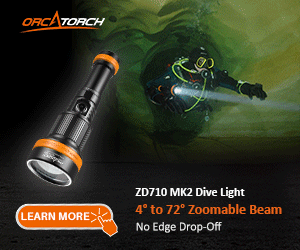Gilligan
Contributor
The Photoshop action is great for correcting those blue photos. However, you will not need that action if you shoot your non-strobe photos in the "Manual White Balance" mode. All you have to do is calibrate your white balance off a dive slate while underwater then process the photos in PS7. Often the simple adjustment of "auto levels" is all you need. Just remember to switch back to "Auto" white balance when using the strobe or you will have red photos.
You will get better results from your camera if you shoot in the "Manual" mode. Just practice with the different F stops and shutter speeds.
RAW mode would be the best choice but it will afford you less photos because it's a memory hog.
You will get better results from your camera if you shoot in the "Manual" mode. Just practice with the different F stops and shutter speeds.
RAW mode would be the best choice but it will afford you less photos because it's a memory hog.



